On the Hilltop and Down By the River
Archaeologists search for the roots of southern Indian cities at the site of Kadabakele
![[image]](http://www.archaeology.org/online/features/kadabakele/thumbnails/kadabakele1.gif)
View from the hilltop site, with the village of Kadabakele below, beside an expanse of rice paddies

Letter from India:
Living Heritage at Risk
![[image]](http://www.archaeology.org/online/features/kadabakele/thumbnails/kadabakele2.gif)
Kathleen Morrison of the University of Chicago at the excavation of an Iron Age domestic site
![[image]](http://www.archaeology.org/online/features/kadabakele/thumbnails/kadabakele3.gif)
One of the two dig sites on top of the hill at Kadabakele contains mysterious megalithic features
![[image]](http://www.archaeology.org/online/features/kadabakele/thumbnails/kadabakele4.gif)
View from the hills that surround the saddle, with both excavation pits
![[image]](http://www.archaeology.org/online/features/kadabakele/thumbnails/kadabakele5.gif)
Residents of the village have become indispensable crew members.
![[image]](http://www.archaeology.org/online/features/kadabakele/thumbnails/kadabakele6.gif)
Kathleen Morrison discusses a find with graduate student Mudit Travedi.
![[image]](http://www.archaeology.org/online/features/kadabakele/thumbnails/kadabakele7.gif)
Kathleen Morrison and graduate student Andrew Bauer of the University of Chicago at the excavation of an Iron Age domestic site
![[image]](http://www.archaeology.org/online/features/kadabakele/thumbnails/kadabakele8.gif)
Kathleen Morrison leads the way down from the hillgirt valley to the river terrace portion of the site. The stepped hole at center was the result of the illegal construction of a reservoir.
![[image]](http://www.archaeology.org/online/features/kadabakele/thumbnails/kadabakele9.gif)
The illegal reservoir, looking up to the saddle where the rest of the site is located
![[image]](http://www.archaeology.org/online/features/kadabakele/thumbnails/kadabakele10.gif)
Kathleen Morrison and her students make the best of a bad situation by cleaning up the wall of the illegal pit to get a profile of deep Early Historic deposits.
![[image]](http://www.archaeology.org/online/features/kadabakele/thumbnails/kadabakele11.gif)
Graduate students work cleaning up a section of the wall of an illegal pit to get a profile of deep Early Historic deposits.
![[image]](http://www.archaeology.org/online/features/kadabakele/thumbnails/kadabakele12.gif)
A ruined 10th- to 11th-century temple sits in the middle of the river terrace, providing an indication of how expansive the Early Historic city was
![[image]](http://www.archaeology.org/online/features/kadabakele/thumbnails/kadabakele13.gif)
A hero stone was found on the river terrace. Common in the early Medieval period, they commemorate death in battle or fights with wild animals.
![[image]](http://www.archaeology.org/online/features/kadabakele/thumbnails/kadabakele14.gif)
The grad students and local excavation crew hike in to the river terrace site. A Middle Period defensive wall is visible in the background.
![[image]](http://www.archaeology.org/online/features/kadabakele/thumbnails/kadabakele15.gif)
A total station is used to ensure that the salvage excavation in the illegal pit can become part of the team's larger data set on the large settlement.
The rice paddies north of the Tungabhadra River in India's state of Karnataka have just been planted. Eventually the shoots will grow tall and then slump under the weight of their heavy panicles, but for now they're a tender green stubble. Massive yellow-and-pink granite boulders in some of the paddies look like surfacing whales or elephants lolling in mud on a steamy morning.
I'm riding through this patchwork of ponds and embankments with University of Chicago anthropologist Kathleen Morrison and her excavation team. It takes about an hour to get from the local city, Hospet, to Kadabakele, the village where they are working on their third excavation season. Hospet is the main tourist hub for the extensive ruins of the 14th- to 16th-century metropolis called Vijayanagara or Hampi, which ruled an empire encompassing most of southern India. Morrison has spent decades studying the city and the surrounding region ("Oceans of Dharma," September/October 2009), but today we're skirting the city's temples and royal residences to understand better what was here before.
We pull up to the small, tidy village of Kadabakele (a corruption of "last gate" in Kannada, the language of the region), sandwiched between the road and a steep hill of giant boulders. The village has provided Morrison and her team with a dedicated crew. All the residents are now stewards of the site, also called Kadabakele, and several have become adept excavators. After a discussion about whose turn it is to carry the trunk up, the grad students and crew members grab armloads of equipment and head up a steep, rocky path. The villager with the trunk on his back leads the way in a dead sprint.
Morrison's previous work in the Vijayanagara region was spread across a broad area. She conducted landscape-level studies to understand how the old city altered the area around it, particularly how it manipulated water to provide for an urban population that was one of the largest in Asia. But this project has a different nature. Rather than going wide, here Morrison is going deep, exploring a long history of use and reuse that covers 3,000 years.
Morrison and I bring up the rear of the column. She stops every minute or two to talk about the site with grand enthusiasm as we make our way up. It's hard to tell from the climb exactly where they could be digging up there, as the top of the hill looks like a pile of boulders the size of starter homes. We pass between some of them and around a corner, and the top of the hill opens up into a flat, hill-girt valley, a six-acre saddle hemmed in by two stories of rock that bounce sound around with a pleasant reverberation. Morrison and Carla Sinopoli, her longtime collaborator from the University of Michigan, identified this hilltop as an important site in 1996 and 1997, during their decade-long assessment of the region, the Vijayanagara Metropolitan Survey. For centuries and centuries, before the rise of the Vijaynagara Empire, people lived up in towns dotted along hills up and down the river. Kadabakele might have been the biggest.
The old orthodoxy, Morrison tells me, was that the Vijayanagara Empire had moved into a largely unpopulated region when the large city was established in the 14th century. Habitation sites of these Iron Age (1000-300 B.C.) and Early Historic (300 B.C.-A.D. 500) peoples had not been found or studied. But the survey, and the depth and complexity of Kadabakele, show that there were dense settlements and sophisticated cultures thriving here before the city rose. And they had some rather mysterious megalithic tendencies that Morrison and Sinopoli (who was not on this trip) are trying to understand.
The team has already started working for the morning as Morrison shows me around. The grad students and villagers here are working in two plots on the western side of the saddle. Down the other side of the hill, students who were in a second car have skirted the hill and hiked into a third excavation area, on a wide flood terrace hemmed in by granite and river.
The sites, up here and on the terrace below, provide the kind of long, unbroken history that makes archaeologists light-headed, and Morrison's excitement as we move from plot to plot is palpable. Here, rather than taking an exhausting, region-scale view, she can settle in and explore deeply the history of one community, in one place, over centuries, to understand the social, economic, and technical evolution of southern Indian cities. The area is also interesting regionally, as it lies along the path of long distance exchange between the northern and southern parts of the country. This is one of the first digs of a settlement site from the period, so just about everything that comes out of the ground is new. And a lot is coming out of the ground.
At the northern plot, out under the intensifying sun, the team, led here by University of Chicago grad student Andrew Bauer, are working through a complicated home site that dates back to the Iron Age. The residents regularly replastered their floors, making for slow-going excavation. As the plaster comes up and the details of the small dwelling start to come into focus, the archaeologists are building a picture of the lives of the site's villagers. They have found three levels of Iron Age occupation, dating back to around 800 B.C., with a smaller rectangular house overlaid on top of a larger round structure that may have burned down. "It just keeps going and going," Morrison says, marveling at the complexity of the site. When the successive layers are excavated completely and analyzed, Morrison and Sinopoli hope see how social and economic inequality, which was emerging at the time, evolved and affected everyday lives. In addition to scores of pottery sherds, the team has also found evidence of complex metallurgy for iron and steel tools and fasteners.
Bauer shows me around another excavation pit from earlier in the season. The area on top of the hill has a natural depression where water accumulates in a seasonal pool. It is dry now, and Morrison's team has dug a 12-foot-deep trench through the sediment. Lab tests, including carbon isotope studies, pollen analysis, and soil chemistry, on samples from this pit will fill in another time sequence to explain the evolution of the community--how the people there altered the water, sediment, and vegetation regimes around the time that rice cultivation spread into the area. The manipulation of these resources also provides information on the emergence of social stratification, which would become a dominant theme in the later Vijayanagara period, when royals and cultural elites made decisions that altered the whole region and built the stone buildings that today draw tourists and hippies from all over the world.
South of the first pit and thankfully in the shade a wall of boulders, another part of the team, led by Mudit Travedi, who is originally from New Delhi but is now a student of Morrison's in Chicago, works on a considerably more puzzling site--a series of odd megalithic structures. Morrison cautions me against sitting on a rock pile next to the plot. "We're up to a three-scorpion count on this unit," she says, and this is one of their preferred haunts. I gingerly take a seat on a stump next to it while Morrison hops in the shallow pit with a trowel. She's just as enthusiastic mixing it up in the dirt as she is when explaining the dig's larger questions. "Every time I walk around, I try to see one new thing," she says.
In this unit there are odd alignments of stones that form circles with little tails: "lollipops," Morrison calls them. The interesting thing about the lollipops is that they run deep. The alignments were maintained over hundreds of years as new stones were added to them. They drift in shape rather randomly, but appear consistently throughout the layers. Sometimes the interiors of the lollipops are filled with broken pottery and bone fragments. No human remains have been found, but Morrison theorizes that these small megalithic structures are some kind of memorials that were revisited continually for centuries, from 800 B.C. to the rise of Vijayanagara. Mysteries on mysteries keep turning up here. In one case, they found a floor surface above one of the lollipops, leading them to assume that it was not associated with a burial. And yet just at the end of the season, they reached the top of what appears to be a burial pit. More information on the purpose and usage of these small megaliths will have to wait until the next season.
At the end of the Iron Age and the beginning of the Early Historic period, the population of the town moved down the side of the hill to the river terrace. But they continued to maintain the lollipops, which by then may have become shrines to the community's ancestral home on top of the hill. "People have kind of turned the whole outcrop into an artifact," she says, referring to the rock alignments, and paintings and pocked designs on some of the surrounding boulders.
Morrison takes me to the south side of the hill so we can descend to the river terrace excavation below. The most obvious feature on the broad, flat plain is a ruined and overgrown 10th- to 11th-century temple right in the center--an indication of how large this town grew before the rise of Vijayanagara. It probably encompassed the entire terrace, which covers more than 90 acres, turning the entire plain into an archaeological site. But upon further examination of the terrace from the top of the hill, it's clear that something is wrong. At the base of the hill, directly where Morrison and I are headed, it looks like someone has tried to dig an Olympic-size swimming pool. The great stepped pit down there is an archaeological catastrophe that Morrison only discovered at the beginning of the season, just a month before my arrival.
As we make our way to the bottom--there's no real path, but we're both spry enough to handle it--Morrison fills in the blanks. Some time since their last field season at the site in 2005, someone illegally brought in construction equipment and dug out this giant pit, apparently to create a reservoir to capture runoff coming down the hill. This is, for Morrison, bitterly ironic, as she spent years studying Vijayanagara-period reservoirs south of the river. "I do think it is a little bit funny [but not funny ha-ha, methinks] that it's the building of a reservoir that's causing all these problems," she says. "I finished studying reservoirs and now they're coming back to haunt me." Locals say that the village council of nearby Anegondi authorized the project, even though the land is protected as part of the greater Vijayanagara area. One might expect that the reservoir was dug with the idea of extending rice paddies (just like on an adjacent terrace) across the archaeologically rich terrace, which would destroy any trace that people ever lived there.
And upon actually arriving at the bottom, I can see just how horrible this intrusion was. The pit is 90 feet long, 65 feet wide, and up to 15 feet deep. The spoils piles from the illegal digging, which sit around the pit in a sloppy ring, are as much ceramics as dirt. "I've never see so much Russet-Coated Painted Ware in one place," says Morrison, surveying the damage. The piles are gray with ash from domestic hearths and studded with large blocks from Medieval foundations. The illegal pit ripped through scores of cultural layers, indicating both how rich the archaeology of the river terrace is and how much there is to lose. "I haven't seen a lot of looting, so for me this is as bad as it gets," Morrison says.
Morrison has submitted reports urging the archaeological authorities to take some kind of action. In the meantime, she has two grad students and a couple of villagers trying to make the best of a bad situation. "The loss of information here is just sickening," she says. "But we are going to get a really beautiful profile." They're cleaning up one side of the pit to create straight vertical cuts, and then digging a little deeper below it to find the earliest archaeological layers. A simple glance at the clean, straight areas they have uncovered confirms how much was wasted when a bulldozer or backhoe came through . There are several thick domestic levels--roofing tiles, brick, ash, bones, countless pottery sherds, layers of plaster and burnt material--just sticking out of the wall. Just where the record ends on top of the hill, it begins down here, and they have found clear evidence of the social differentiation they are trying to track up top. The roof tiles, for example, were a sign of social distinction and wealth at the time. Further comparisons with the saddle should provide a clear record of how that social stratification evolved in early south Indian cities. This social, political, and economic record will be key to understanding the context in which the capital of the Vijayanagara Empire was established.
The entire site is a vast repository of the area's history that represents an unbroken chain of settlement and daily life stretching back around 2,500 years before Vijayanagara. What's already been lost here is astounding, but Morrison and her team will get some information from it that will demonstrate just how rich, complex, and worth protecting the area is.
According to Morrison, this is one of the earliest large towns in the region, or largest early towns, depending on which superlative one prefers. It is huge, deep, and, with one obvious exception, largely untouched, with superb preservation of plant and animal remains. It will tell Morrison and Sinopoli the story of the rise of urbanism in south India, a subject about which little was known until now. "It could be one of those sites, like in the Near East or Egypt, where generations continue to excavate," Morrison says. Scanning out across the river terrace from one of the illegal spoil piles, I can see her point. If the entire terrace has this depth and complexity, Kadabakele could represent the work of several lifetimes.
Samir S. Patel is a senior editor at ARCHAEOLOGY.



 Share Article
Share Article CldiPad





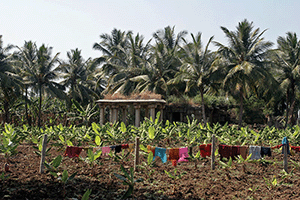
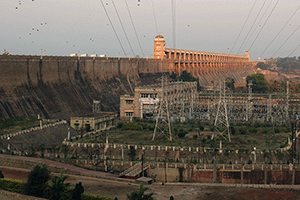
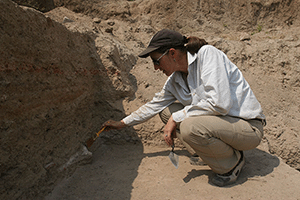
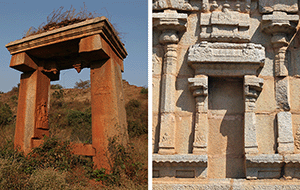
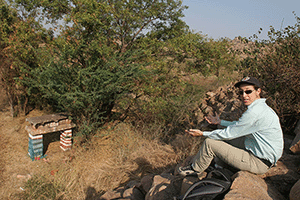
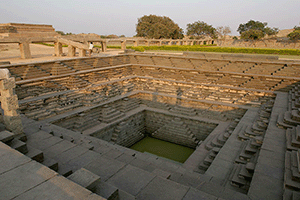
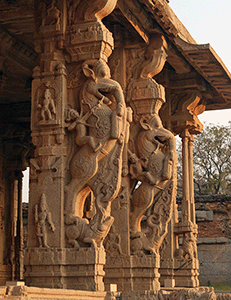
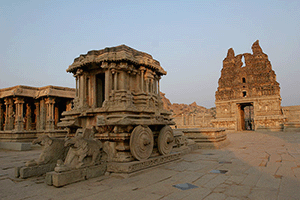
![[foto de la noticia]](http://estaticos01.cache.el-mundo.net/elmundo/imagenes/2010/12/21/ocio/1292583095_0.jpg)

